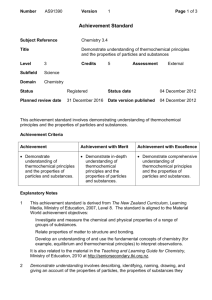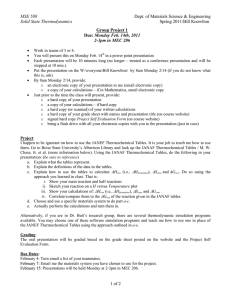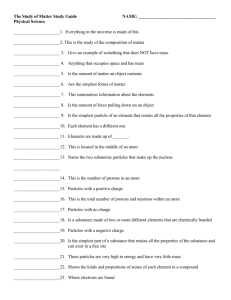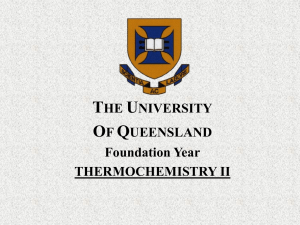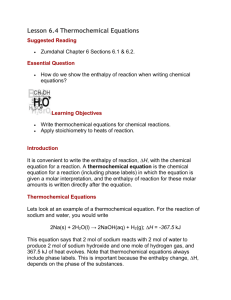91390 Chemistry - No Brain Too Small
advertisement
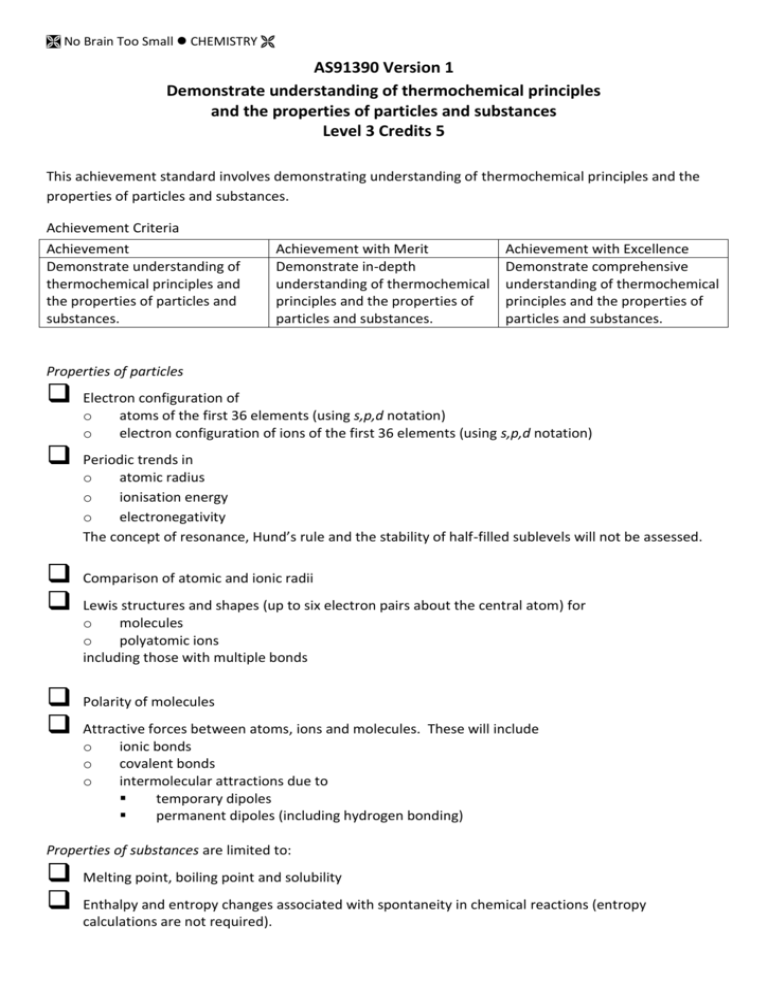
No Brain Too Small CHEMISTRY AS91390 Version 1 Demonstrate understanding of thermochemical principles and the properties of particles and substances Level 3 Credits 5 This achievement standard involves demonstrating understanding of thermochemical principles and the properties of particles and substances. Achievement Criteria Achievement Demonstrate understanding of thermochemical principles and the properties of particles and substances. Achievement with Merit Demonstrate in-depth understanding of thermochemical principles and the properties of particles and substances. Achievement with Excellence Demonstrate comprehensive understanding of thermochemical principles and the properties of particles and substances. Properties of particles Electron configuration of o atoms of the first 36 elements (using s,p,d notation) o electron configuration of ions of the first 36 elements (using s,p,d notation) Periodic trends in o atomic radius o ionisation energy o electronegativity The concept of resonance, Hund’s rule and the stability of half-filled sublevels will not be assessed. Comparison of atomic and ionic radii Lewis structures and shapes (up to six electron pairs about the central atom) for o molecules o polyatomic ions including those with multiple bonds Polarity of molecules Attractive forces between atoms, ions and molecules. These will include o ionic bonds o covalent bonds o intermolecular attractions due to temporary dipoles permanent dipoles (including hydrogen bonding) Properties of substances are limited to: Melting point, boiling point and solubility Enthalpy and entropy changes associated with spontaneity in chemical reactions (entropy calculations are not required). No Brain Too Small CHEMISTRY Thermochemical principles include: Calculations involving the use of specific heat capacity; the value of the specific heat capacity of water (4.18 J °C–1 g–1) will be provided when required. Phase changes Defining and writing equations representing these enthalpy changes o ΔcH o ΔrH o ΔfH o ΔvapH o o ΔsubH ΔfusH Hess’s Law including application of ΔrH = fH((products) – fH(reactants)) and related calculations. All working should be shown in calculations. Numerical answers should be rounded to an appropriate number of significant figures (usually three significant figures). Correct units must be included. Demonstrate understanding involves describing, identifying, naming, drawing, and giving an account of the properties of particles, the properties of substances they form, and thermochemical principles. This requires the use of chemistry vocabulary, symbols, and conventions and may include related calculations. Demonstrate in-depth understanding involves making and explaining links between the properties of particles, the properties of substances they form, thermochemical principles, and related calculations. This requires explanations that use chemistry vocabulary, symbols, and conventions. Demonstrate comprehensive understanding involves elaborating, justifying, relating, evaluating, comparing and contrasting, or analysing links between the properties of particles, the properties of substances they form, thermochemical principles, and related calculations. This requires the consistent use of chemistry vocabulary, symbols, and conventions. This achievement standard replaced AS90780. Now added: Enthalpy and entropy changes associated with spontaneity in chemical reactions (entropy calculations are not required). Now removed: Special characteristics of transition metals (limited to iron, vanadium, chromium, manganese, copper and zinc); variable oxidation state - related to electron configuration, colour - related to electron configuration
